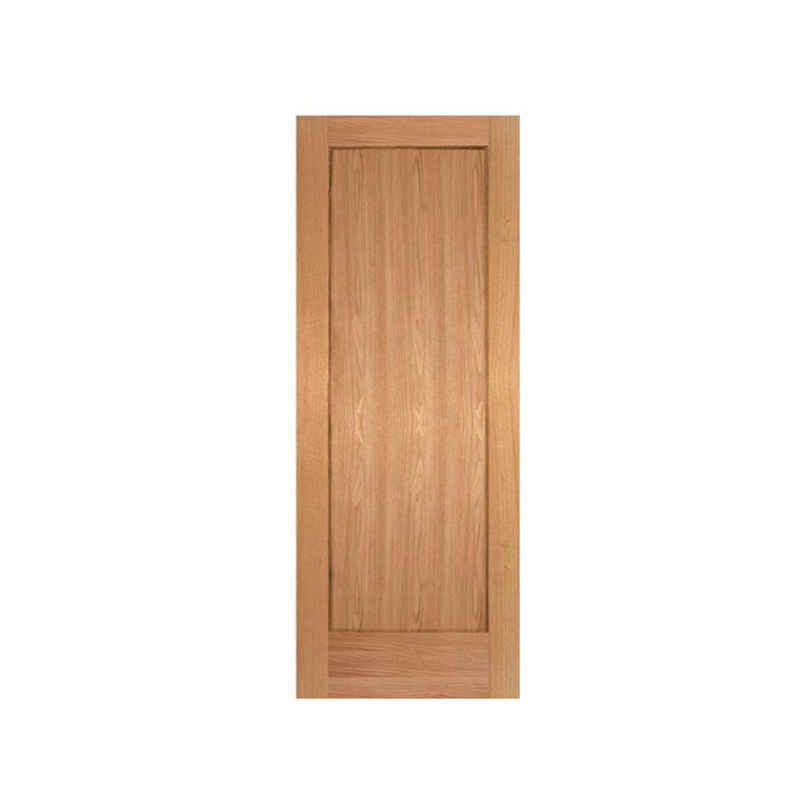2025-04-02
Backyard Hollow Core Wooden Interior Doors are a popular choice for many homeowners, thanks to their balance of affordability, functionality, and aesthetic appeal. These doors, primarily used for interior spaces like backyards, basements, or utility rooms, have gained a reputation for their practicality and versatility. The surface treatment of Backyard Hollow Core Wooden Interior Doors plays a critical role in enhancing their durability, appearance, and performance over time. This article explores various surface treatment methods used for these doors and the impact they have on the overall quality of the door.

Backyard Hollow Core Wooden Interior Doors are lightweight doors made from a wooden frame with a hollow core, often filled with cardboard or another lightweight material to reduce weight without sacrificing strength. This design makes them an ideal choice for areas that require doors that are cost-effective and functional, such as backyard entryways or closets. Despite being hollow, these doors are typically sturdy enough for interior use and can be used in a variety of environments. However, as with any wooden product, the surface treatment is key to ensuring that these doors retain their charm and functionality for years to come.
Importance of Surface Treatment for Backyard Hollow Core Wooden Interior Doors
The surface treatment of Backyard Hollow Core Wooden Interior Doors is essential for a number of reasons. It protects the wood from external elements such as moisture, dirt, and wear and tear. Over time, exposure to humidity and sunlight can cause the wood to warp or fade, bring about premature aging. The right surface treatment creates a protective barrier that preserves the integrity of the door while enhancing its visual appeal.
Another reason surface treatment is crucial is that it increases the door's resistance to scratches, stains, and impacts. Backyard Hollow Core Wooden Interior Doors are frequently used in spaces with high traffic or in areas prone to exposure to dust, moisture, and varying temperatures. Properly treated surfaces help to mitigate the risk of damage and extend the lifespan of the door, ensuring it continues to perform well for many years.
Common Surface Treatments for Backyard Hollow Core Wooden Interior Doors
There are several types of surface treatments available for Backyard Hollow Core Wooden Interior Doors, each with its own set of benefits and aesthetic qualities. The common options include varnishing, staining, painting, and laminating.
Varnishing
Varnishing is one of the popular surface treatments for wooden doors, including Backyard Hollow Core Wooden Interior Doors. This treatment involves applying a clear, protective coating that enhances the natural beauty of the wood grain while providing a layer of protection against moisture and dirt. Varnishing is particularly beneficial for homeowners who want to preserve the wood's original color and texture while offering some degree of water resistance.
The varnish on Backyard Hollow Core Wooden Interior Doors acts as a shield against scratches, sunlight, and minor abrasions, maintaining the door's appearance over time. While this treatment enhances the wood's natural beauty, it also requires regular maintenance to prevent yellowing or fading from prolonged exposure to sunlight.
Staining
Staining is another popular surface treatment for Backyard Hollow Core Wooden Interior Doors. This treatment allows homeowners to change the color of the wood, giving it a deeper or richer tone. Staining not only enhances the wood's natural grain but also offers a degree of protection against moisture and wear. For doors in more humid areas, like basements or near backyards, staining can provide additional protection from environmental factors.
